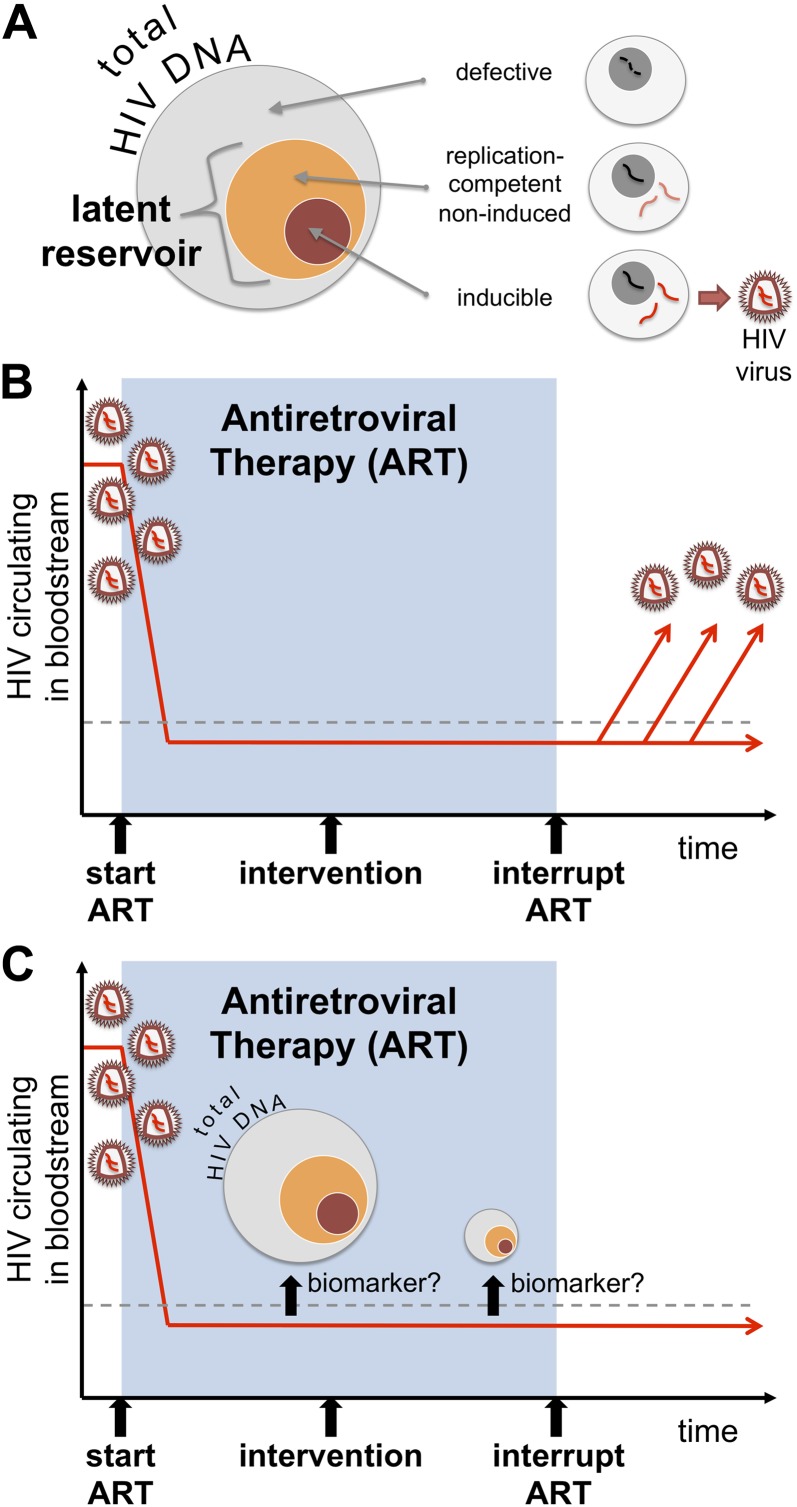Figure 1.
Identifying a biomarker for the latent reservoir of HIV could be used to guide future clinical trials. (A) Much of the HIV DNA harboured by infected cells is defective and cannot replicate itself, but there is a “latent reservoir” of intact HIV DNA that can support replication. However, it is difficult to measure the size of the latent reservoir because only a fraction of the cells in the reservoir can be readily induced to produce HIV in tissue cultures. (B) Antiretroviral therapy (or ART) can suppress the levels of HIV circulating in a patient's bloodstream (red line), below detectable levels (dashed line). However, the only way to currently determine whether a potential cure intervention (vertical black arrow) is effective or not is to interrupt ART and then monitor the amount of the virus in the blood to see if and when the virus ‘rebounds’. (C) Williams, Hurst et al. reveal that measuring the total level of HIV DNA can help predict the progress of an infection after ART is stopped. As such, total HIV DNA could be used as a predictive biomarker in future clinical trials testing potential cure interventions. The total DNA could be measured before a potential cure was administered, and then measured again some time afterwards to see if the level of total DNA has been decreased. Such a biomarker might allow clinicians to identify patients who can safely test cure interventions, and to select those who can safely interrupt their treatment if the ‘cure’ appears successful.

